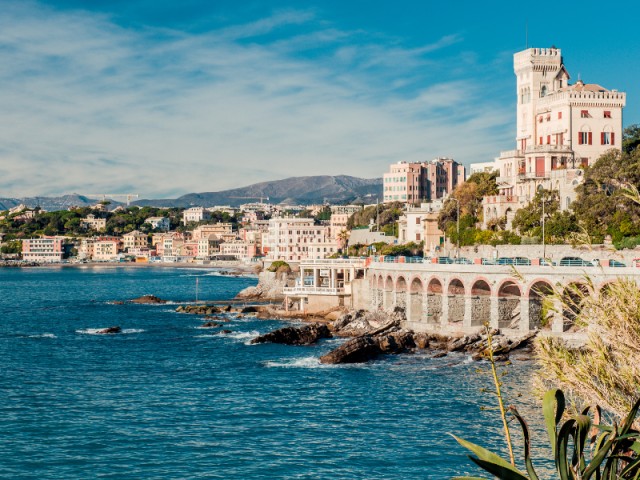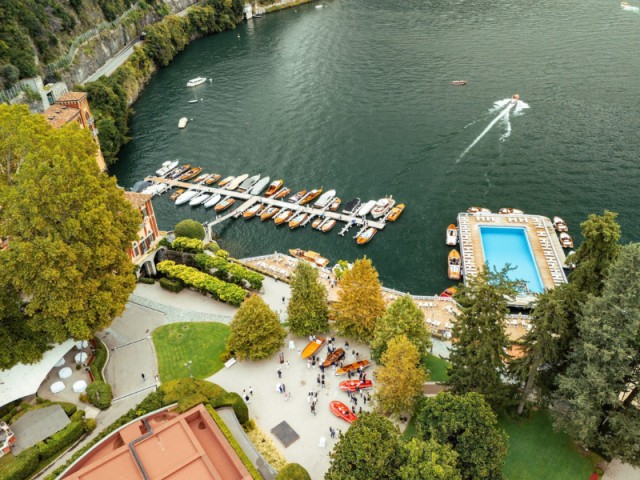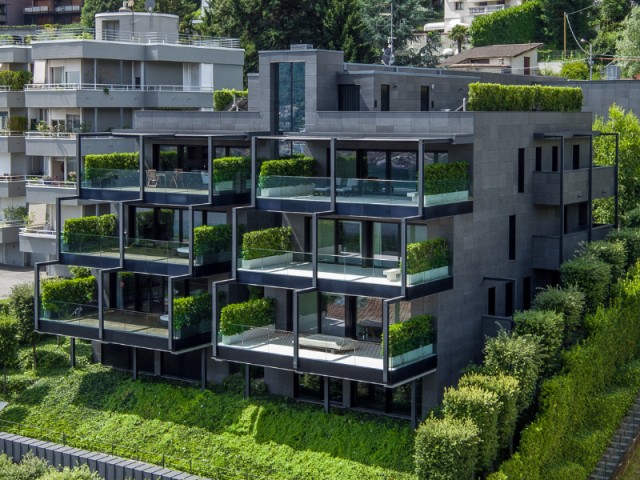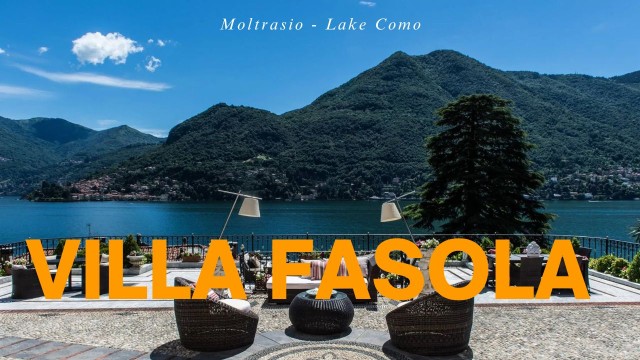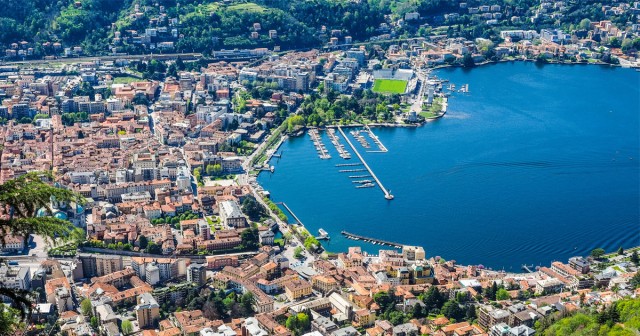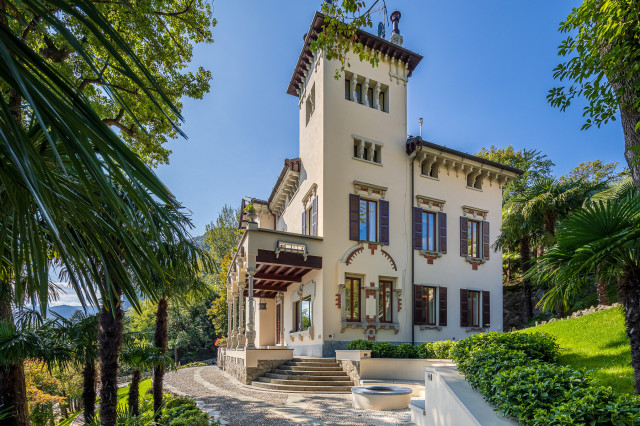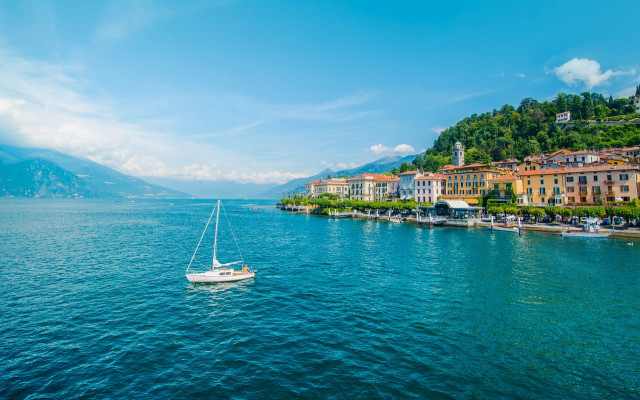
A Tapestry of History and Elegance
Lenno, a name echoing through time, holds tales of ancient origins and timeless allure. Legend suggests its name stems from Lemnos, associated with settlers from the Greek island sent to Lake Como by the decree of Gaio Giulio Cesare. Yet, the true origin aligns with Celtic roots, where "lenn-" in Leponzio means "small mirrors of drinking water," a nod to the enchanting Perlana gorges.
A Geographical Canvas on the Western Shores
Nestled on the western shores of Lake Como, Lenno gracefully sits within a deep inlet, framed by the Lavedo promontory and the Portezza point. In the 18th century, Cardinal Durini aptly named this area the "Gulf of Venus" for its breathtaking beauty.
Where Nature Meets History
Lenno's physical landscape tells a story of change, with the alluvial isthmus connecting the Lavedo promontory to the mountain possibly shaped by the Perlana torrent's course. Below the Sacred Mount of Madonna del Soccorso, the same torrent, once a tuff quarry, forms a deep and narrow gorge, adding to the natural charm.
A Glimpse into Lenno's Past
Lenno's history unfolds like chapters in a book. In the 1st century AD, the isthmus witnessed the juxtaposition of Plinio il Giovane's villas, named "Commedia" and "Tragedia," setting the stage for historical contrasts. The majority of people believe that Villa Tragedia was located in Bellagio, a small town on Lake Como. The exact location of Villa Commedia is less certain. Historian Paolo Giovio (1483-1552) believed that, in the 16th century, Villa Commedia was submerged in Lake Como near the town of Lenno. Geographer Abraham Ortelius (1527-1598) also wrote that Villa Commedia was situated in Lenno. However, in 1876, a Roman mosaic floor and numerous Roman coins were discovered in Lierna, another small town on Lake Como. Many believe that the mosaic floor was part of Villa Commedia. In the early 20th century, French geographer Élisée Reclus wrote that one of Pliny's villas was in Lierna but did not specify which one.
The region played a role in the war between Como and Milan (1118–1127) during the conflict against the Isola Comacina, Milan's ally.
Traces of Roman Heritage and Beyond
Ancient Roman tombs near the Collegiate Church of Santo Stefano and recovered columns on the lakebed, now at the Archaeological Museum Paolo Giovio in Como, hark back to Roman times. Lenno's streets and squares hold stories of Roman legions and Greek settlers from Lemnos, as suggested by historical remnants.
Symbols and Honors of Lenno
Lenno, adorned with the symbols of three Roman columns and Lake Como's waters in its coat of arms, stands decorated with the War Cross for Military Valor for its sacrifices during World War II.
Architectural and Cultural Treasures
Lenno boasts a wealth of architectural and cultural gems:
Collegiate Church of Santo Stefano and Baptistry: A church with an XI-century crypt and a Romanesque baptistry.
Abbey of Acquafredda: Founded in 1142–1143 by Cistercian monks, hosting frescoes by Giovan Mauro Della Rovere.
Church of Sant'Andrea: A Romanesque church in Casanova with Mille-era frescoes.
Casa Brenna Tosatto: Liberty-style building housing a collection of paintings and unique decor by Mario Tosatto.
Other Notable Structures: Villa del Balbianello, Villa Monastero, Villa Aureggi, Torre di Villa, Casa Brenna Tosatto, Villa La Cassinella, and more.
Natural Marvels and Historical Remnants
Orrido della Val Perlana: A gorge, once a tuff extraction site, showcasing nature's wonders.
Lenno, a living testament to Lake Como's past and present, invites you to explore its timeless beauty.
Notable Architectural and Cultural Treasures
Villa del Balbianello: A jewel in Lenno's crown, Villa del Balbianello, is not just a historical marvel but also a cinematic setting. George Lucas chose this enchanting location for scenes in "Star Wars: Episode II - Attack of the Clones" (2002), making it the residence of Senator Padmé Amidala on the "planet of lakes," Naboo. Additionally, the villa graced the screen in "Casino Royale" (2006).
Villa Monastero: A stone portal with mixed lines leads to the property of Villa Monastero. Originally tied to military structures related to the fortifications of Isola Comacina, the villa occupies the space that housed a Benedictine convent from 1209-1211 to 1786. The property underwent significant renovations during its transformation from a convent to a holiday residence.
Villa Aureggi: Dating back to 1886, Villa Aureggi stands within a garden featuring an osmanthus plant. The villa comprises a central structure with three levels, adorned with a curvilinear tympanum, and two lower lateral volumes. Linked to the nearby Villa tower in the past, Villa Aureggi tells a tale of architectural evolution.
Torre di Villa: Erected in Moltrasio stone between the 14th and 15th centuries as a customs checkpoint, Torre di Villa stands at a height of over 19 meters. A silent witness to historical transitions, this tower adds a medieval touch to Lenno's landscape.
Casa Brenna Tosatto: A liberty-style building designed at the beginning of the 20th century by the painter and architect Mario Tosatto, Casa Brenna Tosatto is more than an architectural gem. Inside, it houses a collection of paintings created by Mario Tosatto and his son Antonio, along with friends. A spiral staircase adorned with wrought iron and a table shaped like a missoltino are among its unique features.
Other Architectural Marvels and Historical Landmarks
Villa La Cassinella (or Cassinelle): Erected in 1926 by Carlo Mantegazza, Villa La Cassinella stands as a testament to architectural grandeur.
Villa de Herra: Originally belonging to the noble Lombard family Delmati, Villa de Herra passed to the Milanese de Herra family through the marriage of Giuseppina Delmati to lawyer Don Cesare de Herra.
Ex-filatoio Grandi: Constructed between the seventh and eighth decades of the 19th century, the Ex-filatoio Grandi, located on Via del Soccorso 47, served as an oil press until 1927. Internally, it houses Lenno's library.
Ex-ospitale di Gerusalemme (XIII century): A rural building set on a former convent and hospice, situated in what once was the square of the Era locality.
Rifugio "Col. Cornelio - Cap Venini": At the foot of Mount Galbiga, the alpine troops built the refuge on the remains of a military encampment from the 1915-18 war.
Natural Marvels and Historical Remnants
Orrido della Val Perlana: A historical extraction site for tuff, the Orrido della Val Perlana showcases nature's artistry, providing a scenic escape for visitors.
Lenno, a living testament to Lake Como's past and present, invites you to explore its timeless beauty and architectural wonders.









